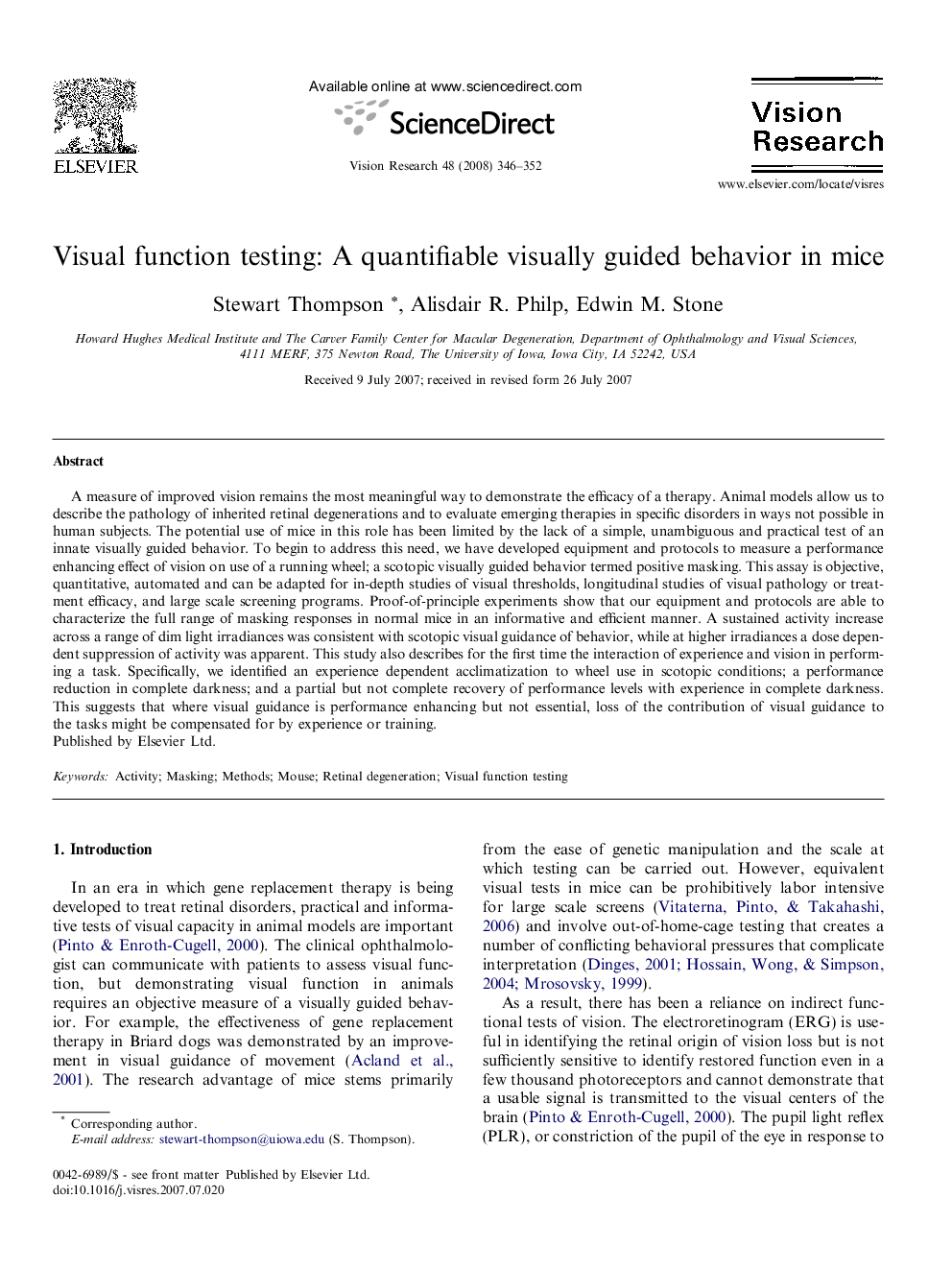| Article ID | Journal | Published Year | Pages | File Type |
|---|---|---|---|---|
| 4035071 | Vision Research | 2008 | 7 Pages |
A measure of improved vision remains the most meaningful way to demonstrate the efficacy of a therapy. Animal models allow us to describe the pathology of inherited retinal degenerations and to evaluate emerging therapies in specific disorders in ways not possible in human subjects. The potential use of mice in this role has been limited by the lack of a simple, unambiguous and practical test of an innate visually guided behavior. To begin to address this need, we have developed equipment and protocols to measure a performance enhancing effect of vision on use of a running wheel; a scotopic visually guided behavior termed positive masking. This assay is objective, quantitative, automated and can be adapted for in-depth studies of visual thresholds, longitudinal studies of visual pathology or treatment efficacy, and large scale screening programs. Proof-of-principle experiments show that our equipment and protocols are able to characterize the full range of masking responses in normal mice in an informative and efficient manner. A sustained activity increase across a range of dim light irradiances was consistent with scotopic visual guidance of behavior, while at higher irradiances a dose dependent suppression of activity was apparent. This study also describes for the first time the interaction of experience and vision in performing a task. Specifically, we identified an experience dependent acclimatization to wheel use in scotopic conditions; a performance reduction in complete darkness; and a partial but not complete recovery of performance levels with experience in complete darkness. This suggests that where visual guidance is performance enhancing but not essential, loss of the contribution of visual guidance to the tasks might be compensated for by experience or training.
